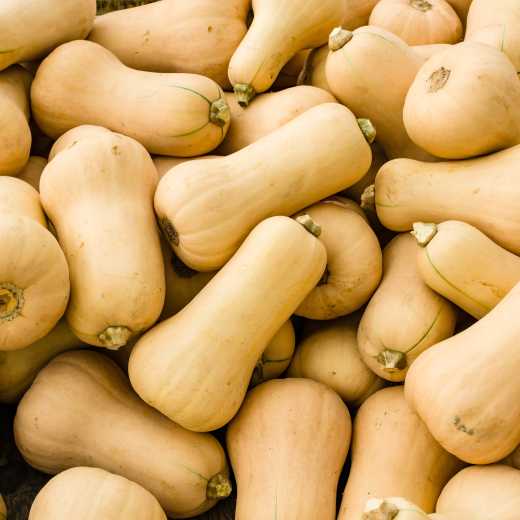Late Winter is a Good Time to Prune
Although you can prune your plants at any time, and it may not kill them, there are best times to prune. In general, the best time to prune most plants is during late winter or early spring before growth begins. It is also a great time to prune because the leaves are off, you can actually see the structure of the plants and get to the plants more easily to get the job done. The worst time to prune is immediately after new growth begins in the spring. A great amount of carbohydrates stored in roots and stems is used in developing new growth. This "food" should be replaced by new foliage before it is removed or considerable setback in plant growth may occur.
It is also advisable to limit the amount of pruning done late in summer as new growth may not have sufficient time to harden off before cold weather arrives, resulting in cold damage or winterkill. An exception to late-winter pruning is spring-flowering trees, shrubs, and vines that should be pruned immediately after they bloom as soon as the flowers have faded. Spring-flowering plants form their flowers during the summer and fall. Therefore, summer, fall or winter pruning will remove flower buds and you won't have any flowers in the spring.
The hard part in late winter is to find a day that is not too cold, windy, or rainy. Hopefully, you will have a few nice days to take advantage of and get some pruning done with the following general pruning guidelines.
- Have a reason to prune. The main purpose for pruning is to encourage new growth, not to restrict it. Whenever you make a pruning cut, the plant is stimulated to put out new growth as a survival mechanism. That's the reason all the Crepe Myrtles, that have had “Crepe Murder” committed on them, have hundreds of ugly, thin branches sticking out where the cut was made with big lumps of scar tissue built up - they are trying to save their lives.
- Use sharp tools and prune lightly rather than severely - that doesn't mean just to give your plants a haircut and trim the ends. That's another reason plants put out a lot of new growth all in one area and look unnatural and out of balance. Work slowly, taking time to step back and look at what you have done. You can always go back and take more off if you need to, but you can't put branches back. Never prune off more than 1/3 of any plant at one time because it could put so much stress on a plant that it might not survive. The 1/3 rule applies to all plants including shrubs, trees, lawns, perennials, and annuals. This does not apply to dormant perennials and ornamental grasses that need old growth removed to make way for new growth.
- Cut branches at a node which is the point at which one branch attaches to another. That's where new growth will occur. If you just cut off a branch anywhere, it will die back to the node anyway and create a place for decay and disease as well as looking ugly.
- Start the pruning process with the 4 D's. That means removing any dead, diseased, damaged, and dinky (tiny) branches or stems. Dead branches are the exception in that they can and should be removed at any time because they attract insects and invite diseases to develop in the plant and look ugly.
- Next, remove dangling and crossing branches and suckers - shoots that start near or below the ground. Now thin out water sprouts - shoots that grow straight up off the trunk or other branches.
- Be sure to clean and sterilize your pruning tools between each cut, if you suspect disease, this prevents spreading the disease throughout the plant or to other plants. Use a solution of about two tablespoons of alcohol to one cup of water to disinfect your tools.
- There are two main pruning cuts: heading cuts and thinning cuts. A heading cut controls the direction of the new growth. Choose a bud that is pointing in an outward facing direction and make a cut about a quarter inch in front of it at about a 45-degree angle so that it slopes down and away from the bud to shed moisture that also invites diseases. A thinning cut removes entire branches. These cuts basically "open up" a dense tree or shrub to more sunlight and air circulation without stimulating new growth. Make thinning cuts parallel to the larger branch just in front of the branch collar. If you are removing a large branch - more than 2 inches in diameter, always follow the 3-Step approach to limb removal to prevent damage to the trunk. First, make an undercut 1/4 of the way into the branch from below and about 12 inches out from the trunk. Second, cut through the branch from the top down 3 or 4 inches farther out on the limb past the undercut. Third, cut the remaining stub back to the branch collar - not flush with the trunk. If you try to save time by skipping the 3-step approach and only make one cut, the bark is likely going to peel off down the trunk and damage the tree severely. Do not apply wound dressing or anything else over the cut. Let nature do the healing.
- DO NOT hat rack a tree or shrub. Hat racking is the unsightly procedure used to whack or top off trees under power lines and results in weak, rapid growth of the tree, slow decline, and eventual death. Your local utility service may need to do this to keep trees from touching utility lines to prevent fires and keep lines from being damaged during wind and ice storms; however, homeowners have no reason to do this. Hat racking is also called “Crepe Murder” when done to Crepe Myrtles and, yes, there are people all over the South paying so-called professionals to whack off their beautiful Crepe Myrtles, which eventually results in their death. I haven’t seen anyone use a chain saw to lop off the tops of redbuds, dogwoods or other ornamental trees and it should never, ever be done to Crepe Myrtles, either.
- So, the most important cardinal rules of pruning are: have a reason to prune and know why you are pruning, never remove more than 1/3 of the growth and Thou Shalt Not Commit “Crepe Murder!”

 Member Login
Member Login






